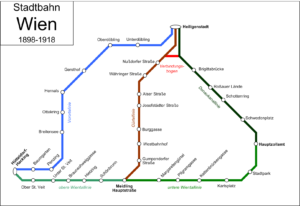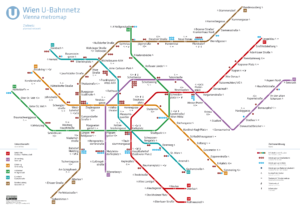The history of the Vienna subway began in 1898 with the opening of the first underground tunnel (Wiener Stadtbahn or also called Dampfstadtbahn) under the city center of Vienna. The first section connected the stations Schottenring and Kaiser-Ebersdorf. The subway continued to expand, and by 1913 the network had grown to six lines with a total length of 59 kilometers.
During World War II, Vienna’s subway network was severely damaged, but reconstruction began immediately after the war. In the 1950s, new subway lines were opened and the network was further expanded. The Vienna subway is one of the most modern transportation systems in Europe.
In the 1970s, the Vienna Underground began using computer technology to improve the efficiency of its operations. In the following decades, technological modernization continued, and today the Vienna Underground is an important part of the city’s public transportation system and one of the most reliable subway systems in the world.
Today, the Vienna Underground is an important part of daily life in Vienna and contributes to the quality of life in the city. With its extensive network of lines and frequent train connections, the Vienna Underground is a convenient and efficient way to get around the city.



